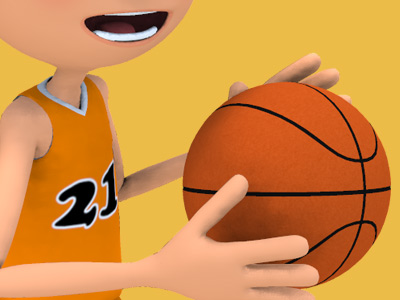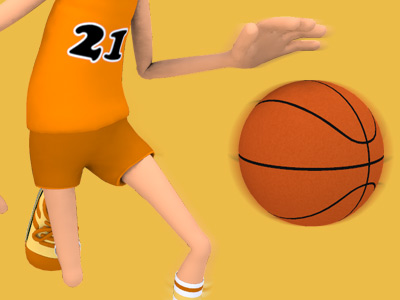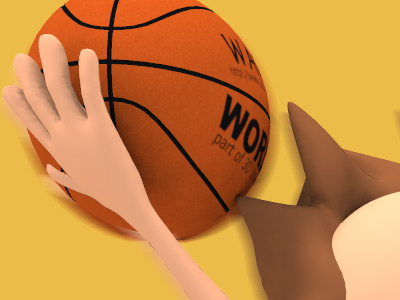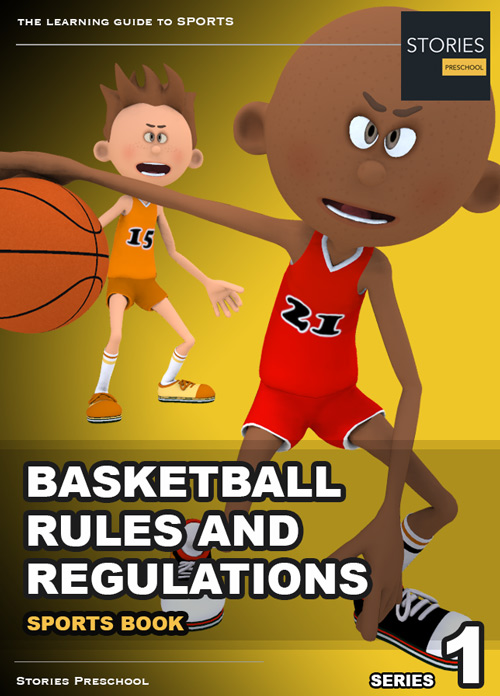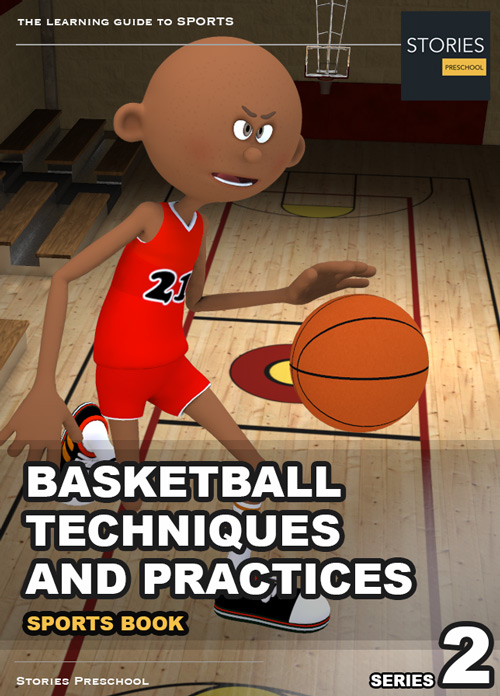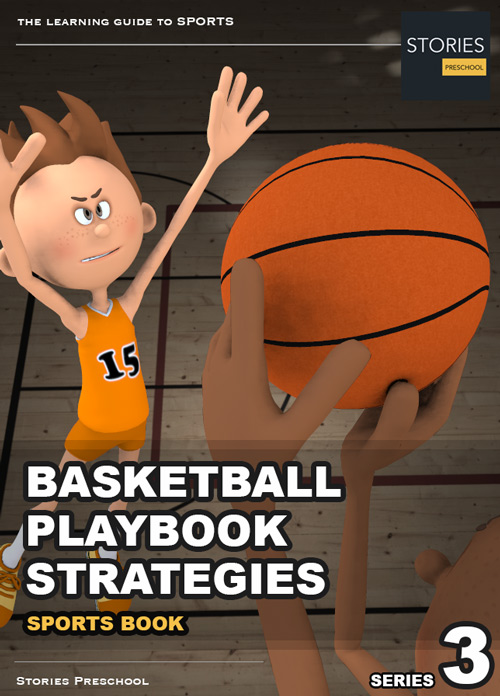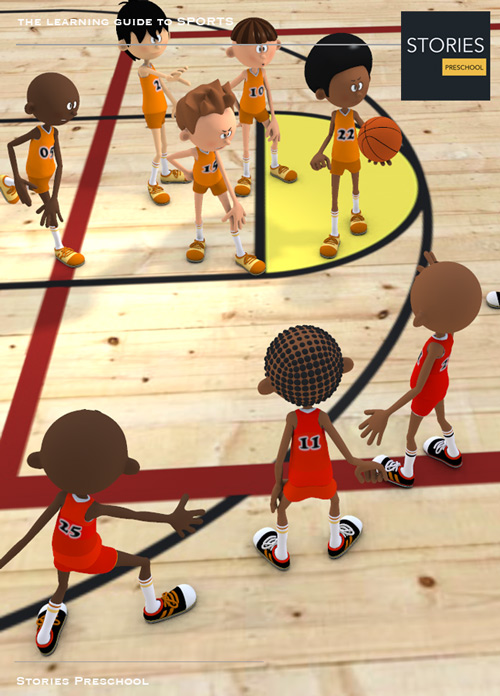Basketball

Basketball Court
In basketball, the basketball court is the playing surface, consisting of a rectangular floor with tiles at either end. In professional or organized basketball, especially when played indoors, it is usually made out of a wood, often maple, and highly polished. Outdoor surfaces are generally made from standard paving materials such as concrete or asphalt.

Dimensions
Basketball courts come in different sizes and colors. In the NBA, the court is 94 by 50 feet (29 by 15 m). Under International Basketball Federation (FIBA) rules, the court is minutely smaller, measuring exactly 28 by 15 metres (92 by 49 ft). A high school court is slightly smaller, at 84 by 50 feet (26 by 15 m). In amateur basketball, court sizes vary widely. The baskets are always 10 feet (3.0 m) above the floor (except possibly in youth competition). Basketball courts have a three-point arc at both baskets. A basket made from behind this arc is worth three points; a basket made from within this line, or with a player's foot touching the line, is worth two points. The free-throw line, where one stands while taking a foul shot, is located within the three-point arc.
Height

The height of the underside of the roof structure, or the ceiling if there is one, above the floor is specified by each sport’s governing body, and this is a critical design factor. Badminton, tennis and trampolining require an unrestricted height of 9.1m for international competition, while 7.6m is necessary at C level in all sports except those for which height is not critical. In general a basketball court should have a minimum clearance of 25 feet (7.7m), although a ceiling height of at least 27 feet (8.23m) is recommended.
Dimensions table
| Area | NBA | FIBA | WNBA | NCAA | U.S. H.S. | U.S. Junior H.S. | |||||||
|---|---|---|---|---|---|---|---|---|---|---|---|---|---|
| Imperial | Metric | Imperial | Metric | Imperial | Metric | Imperial | Metric | Imperial | Metric | Imperial | Metric | ||
| Court length | 94 ft | 28.65 m | 91.86 ft | 28 m | Same as NBA | 84 ft | 25.60 m | 74 ft | 22.56 m | ||||
| Court width | 50 ft | 15.24 m | 49.21 ft | 15 m | Same as NBA | 42 ft | 12.80 m | ||||||
| Rim height | 10 ft | 3.05m | Same as NBA | ||||||||||
| Restricted arc radius | 4 ft | 1.22 m | 4.10 ft | 1.25 m | Same as NBA | 3 ft | 0.91 m | Non-existent | |||||
| Center circle diameter | 12 ft | 3.66 m | 11.81 ft | 3.6 m | Same as NBA | ||||||||
| 3-point line distance from the basket | 23.75 ft 22 ft in corner* |
7.24 m 6.70 m in corner* |
22.15 ft 21.65 ft in corner† |
6.75 m 6.60 m in corner† |
Same as FIBA | 20.75 ft | 6.32 m | 19.75 ft | 6.01 m | Same as high school | |||
| Key (shaded lane or restricted area) width |
16 ft | 4.88 m | 16.08 ft | 4.9 m | Same as NBA | 12 ft | 3.66 m | Same as NCAA | |||||
| Free-throw line distance from point on the floor directly below the backboard | 15 ft | 4.57 m | 15.09 ft | 4.6 m | Same as NBA | ||||||||
* The NBA three-point line is 3 ft (0.91 m) from the sideline in a zone starting at the baseline and ending when it crosses the 23.75 ft (7.24 m) arc. The 22 ft (6.70 m) measurement applies only at a point where a line parallel to the baseline intersects the long axis of the court and the center of the basket.
† The FIBA three-point line is 2.95 ft (0.90 m) from the sideline in a zone starting at the baseline and ending when it crosses the 22.1 ft (6.75 m) arc. The 21.65 ft (6.60 m) measurement applies only at a point where a line parallel to the baseline intersects the long axis of the court and the center of the basket.
Sections of the basketball court
Center circle
The only two players permitted to enter this area prior to the tipoff are the players contesting the jump ball (usually but not always centers). Both players jump when the referee throws the ball in the air, each attempting to tap the ball into the hands of a player of their own team.

Three-point line
The three-point line is the line that separates the two-point area from the three-point area; any shot converted beyond this line counts as three points. If the shooting player steps on the line, it is counted as two points only. Any foul made in the act of shooting beyond the three-point line would give the player three free throws if the shot doesn't go in, and one if it does.
The distance to the three-point line from the center of the basket varies depending on the level or league, and has changed several times. These are the current distances, with the league or level using each distance:
- 19.75 ft (6.01 m): High School
- 20.75 ft (6.32 m): NCAA
- 21.65 ft (6.60 m) to 22.15 ft (6.75 m): WNBA and FIBA
- 22 ft (6.71 m) to 23.75 ft (7.24 m): NBA
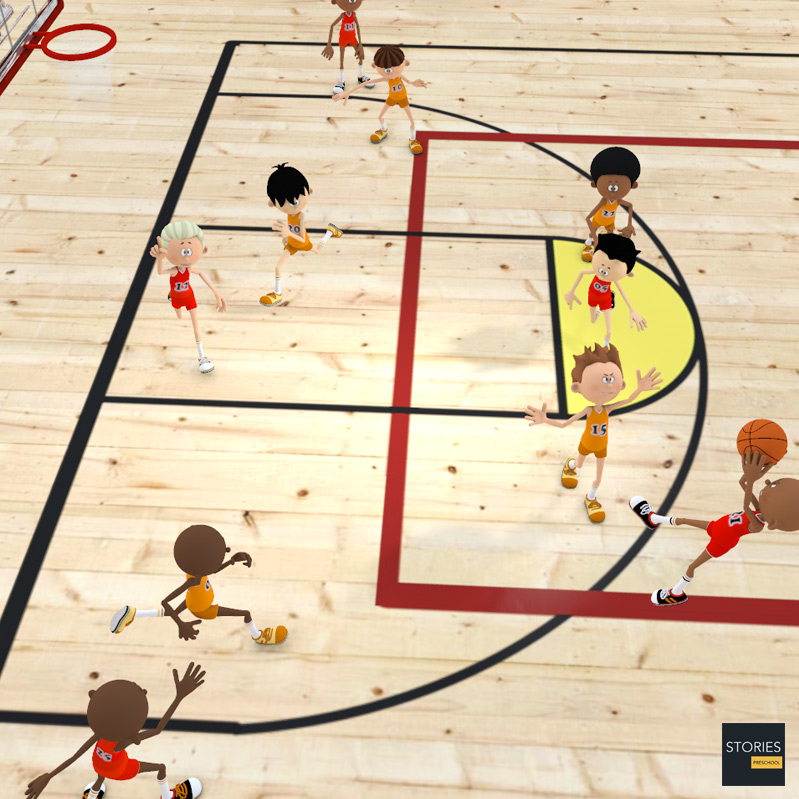
The NBA adopted the three-point line at the start of the 1979–80 season. This is of variable distance, ranging from 22 feet (6.7 m) in the corners to 23.75 feet (7.24 m) behind the top of the key. During the 1994–95, 1995–96 and 1996–97 seasons, the NBA attempted to address decreased scoring by shortening the overall distance of the line to a uniform 22 feet (6.7 m) around the basket. It was moved back to its original distance after the 1996–97 season. FIBA and the NCAA both adopted the three-point line in 1985.
In most high school associations in the United States, the distance is 19.75 feet. This was formerly the distance for college basketball as well. On May 26, 2007, the NCAA playing rules committee agreed to move the three-point line back one foot to 20.75 feet for the men. This rule went into effect for the 2008–2009 season. The three-point line for women (NCAA) moved back one foot to 20.75 feet at the start of the 2011–2012 season.
The international distance, used in most countries outside the United States and in FIBA and WNBA competition, is currently 6.6 m (21.65 ft) to 6.75 m (22.15 ft).
Perimeter
The perimeter is defined as the areas outside the free throw lane and inside the three-point line. Shots converted (successfully made) from this area are called "perimeter shots" or "medium-range shots." If a player's foot is on the three-point line, the shot is considered a perimeter shot.

Low post area
The low post is defined as the areas that are closest to the basket but outside of the free throw lane. This area is fundamental to strategy in basketball. Skilled low post players can score many points per game without ever taking a jump shot.
Key
The key, free throw lane or shaded lane refers to the usually painted area beneath the basket; for the NBA it is 16 feet (4.9 m) wide, for the NCAA it is 12 feet (3.7 m) wide; for both instances it extends 15 feet (4.6 m) from the backboard. At the top of the rectangle is the free throw line, behind which players shoot uncontested shots when they're fouled. A circle is drawn around the free-throw line with a 6 feet (1.8 m) radius; this is used for jump ball instances, as is done at the center circle. Two 6-inch hash lines, 3 ft from the free throw lane line and 5 ft 8 in from the free throw line, show the lower defensive box linked to the restricted area.
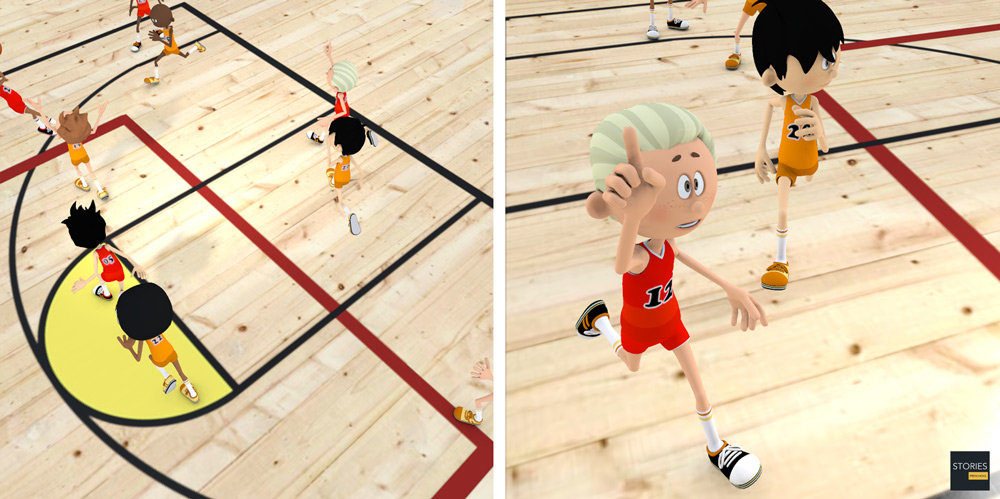
For FIBA tournaments, since October 2010 the key has been a rectangle 4.9 m wide and 5.8 m long. Previously it was a trapezoid 3.7 meters (12 ft) wide at the free-throw line and 6 meters (19 feet and 6.25 inches) at the end line.
The key is primarily used to prevent players from staying beneath the basket of the opponents' team for long periods (maximum three seconds).
Restricted area arc
The restricted area arc is a semi-circular arc drawn around the area directly underneath the basket. With some exceptions, members of the defending team cannot draw charging fouls in this area. The restricted arc in NBA and WNBA competition has a radius 4 feet (1.22 m) from below the center of the basket. The restricted arc in NCAA competition (both men's and women's) is of radius 3 feet (0.91 m) from below the center of the basket.
Other lines
On NBA floors, two hash marks are drawn at the end lines near the key to mark the area known as the lower defensive box. A defensive player is allowed to draw a charging foul within the restricted arc if the offensive player receives the ball and/or starts his drive within this area.
Also, two lines are drawn on each of the sidelines, 28 feet from each of the endlines, which designates the extent of the coaching box and bench. This line marks the farthest extent a coach (aside from the sidelines) can stand. Directly behind this area is the team bench.
On the half-court line of NBA floors two lines extend outside the playing court, designating the place where substitutes wait before they can enter the playing court; directly behind this area are the various off-court officials such as the timekeeper and reserve referee.
FIBA changes
On April 26, 2008, FIBA announced several major rules changes involving the court markings. These changes took effect for major international competitions on October 1, 2010, after that year's World Championships for men and women, and became mandatory for other competitions on October 1, 2012 (although national federations could adopt the new markings before 2012). The changes were as follows.
- The shape of the key changed from a trapezoid to a rectangle as it is in the NBA, with NBA dimensions.
- The three-point line moved back to 6.75 metres (22 ft 1.7 in) from 6.25 metres (20 ft 6.1 in), compared to 23 ft 9 in (7.24 m) for the NBA at the top of the arc.
- The FIBA adopted the NBA's restricted area arc with a marginally wider radius of 1.25 metres (4 ft 1.2 in).
SPORTS
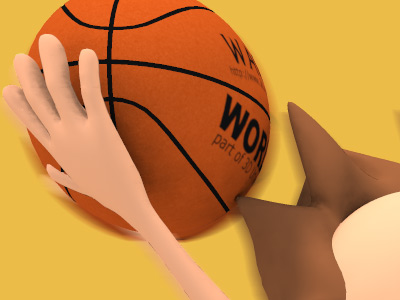
RESOURCES
This article uses material from the Wikipedia articles "Basketball" and "Basketball court", which is released under the Creative Commons Attribution-Share-Alike License 3.0.
© Stories Preschool. All Rights Reserved.
